Shinto blade (18th century) of the hira-zukuri (“flat blade”) muzori (no curve) type.
It is signed 日本鍛冶 宗正
伊賀守藤原金道
“Nihon kaji Sosho
Iga no kami fujiwara Kinmichi”
This indicates that the blade was forged by Fujiwara Kinmichi, a renowned blacksmith who held the honorary title of Iga no Kami.
The name Fujiwara Kinmichi refers to a prestigious line of Japanese blacksmiths active mainly in Kyoto during the Edo period.
The title “Iga no Kami” (伊賀守), meaning “Governor of Iga Province”, was an honorary title conferred by the imperial court, often used by blacksmiths of the Kinmichi lineage. The first Iga no Kami Kinmichi received this title in recognition of his exceptional skill. In addition, he was honored with the title “Nihon Kaji Sōshō” (日本鍛冶宗匠), meaning “Master Blacksmith of Japan”. This title gave him the authority to supervise blacksmiths across the country and award them honorary titles.
A notable distinction granted to this lineage was permission to affix the Kikumon, i.e. the imperial emblem in the shape of a sixteen-petaled chrysanthemum, to the silk (nakago) of their blades. This mark, visible on our tantō, was a symbol of imperial approval and testified to the high status of Kinmichi blacksmiths.
As for the rest of the sword:
The tsuba is made of copper alloy featuring the dragon and sea god Ryujin among the waves.
The fuchi kashira (lower guard sleeve and pommel) in shakudo suite and gilded copper alloys, decorated with plovers in flight and traditional houses.
The tsuka is made of same (shagreen) and braided silk. Menuki in copper in the shape of villagers with baskets.
Kogatana in sentoku and decorated with three running shishi.
Nagasa (blade size): 23cm
Size of weapon in its scabbard: 38cm
Edo period, Japan 18th century.
Used condition, the blade is in poor condition and shows traces of oxidation. Various missing parts on the saya, notably the kojiri (metal piece at the end of the scabbard).
Shipment is carefully handled and will be made the day after receipt of payment.




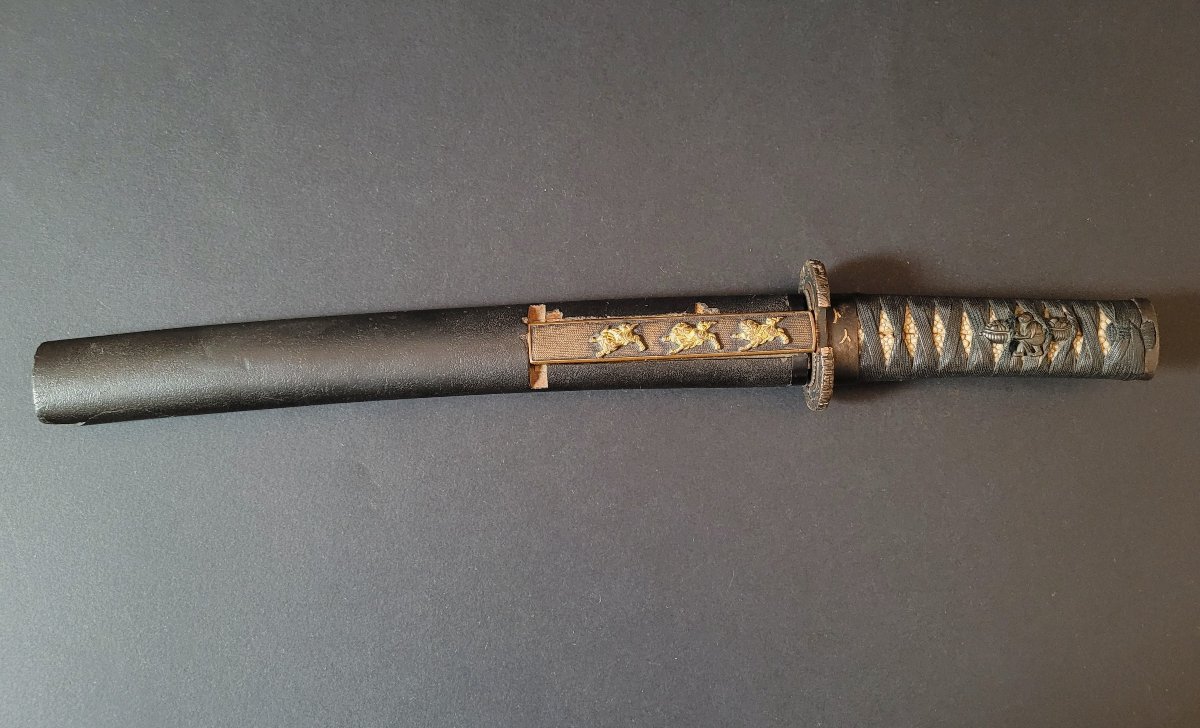
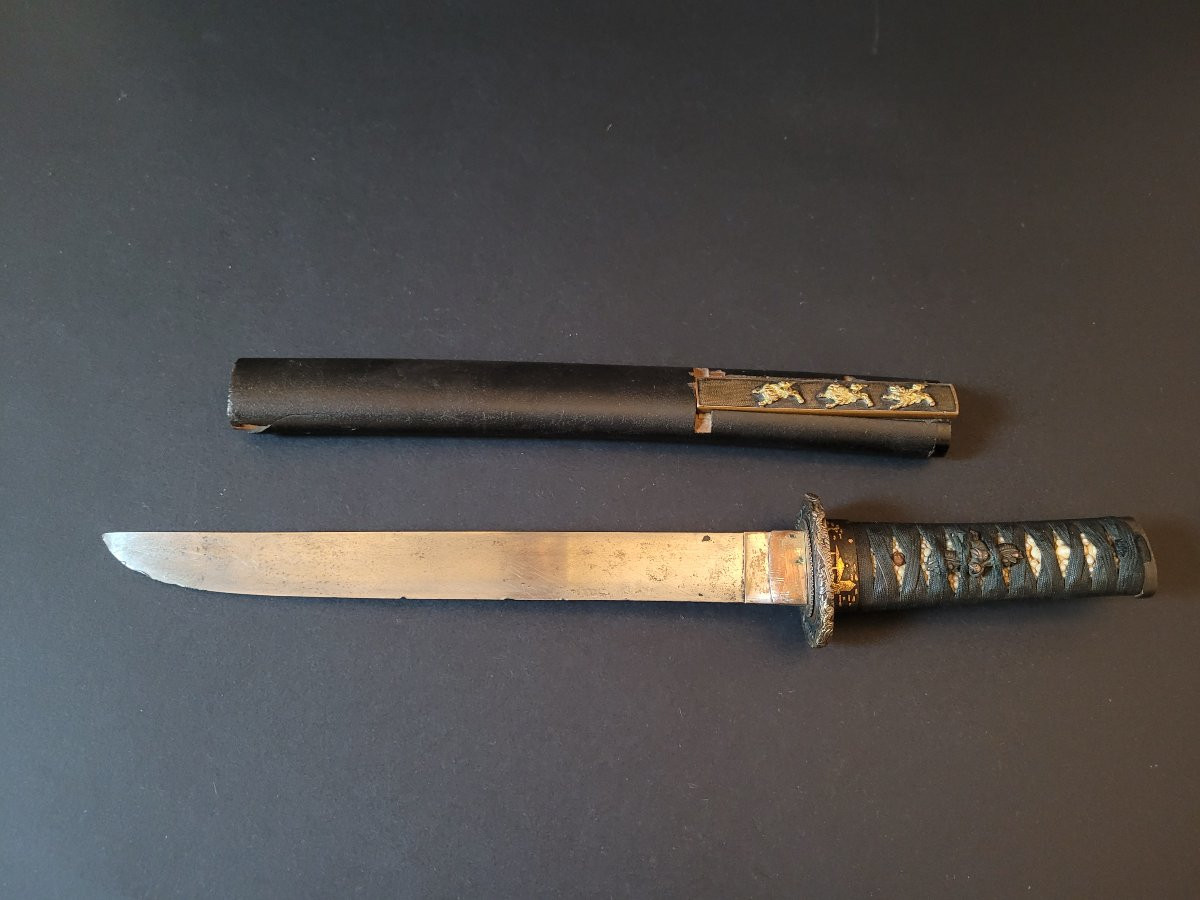

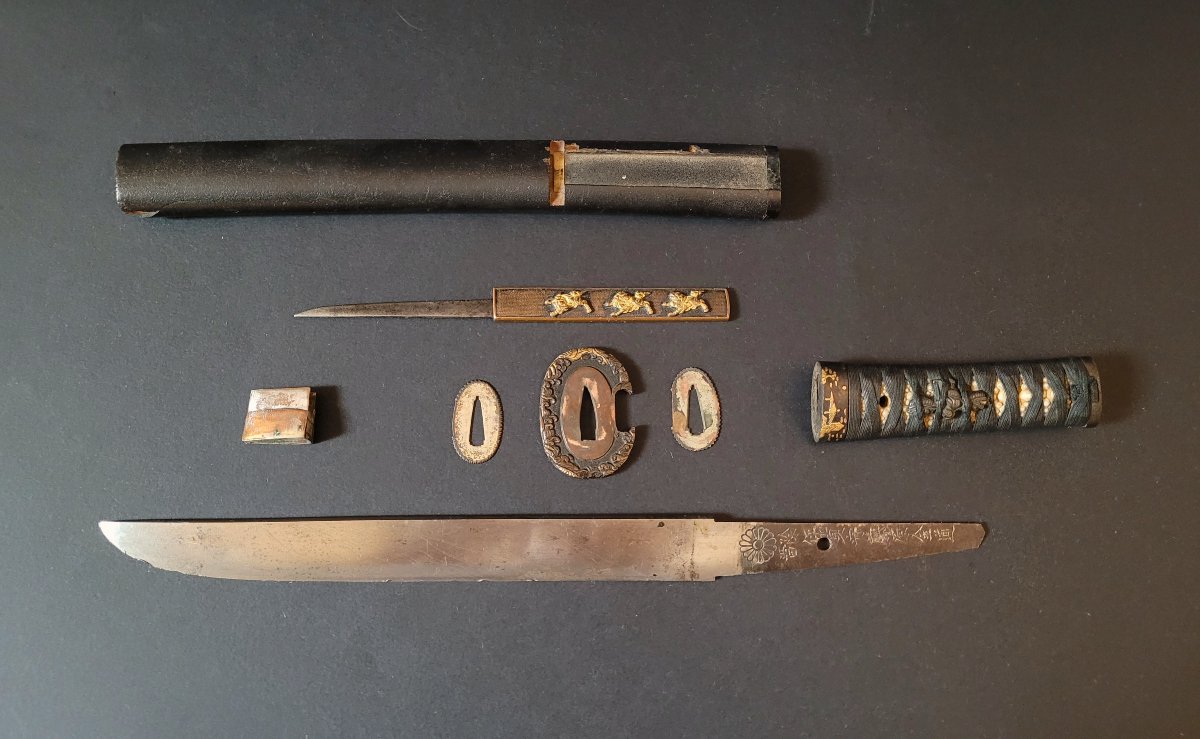
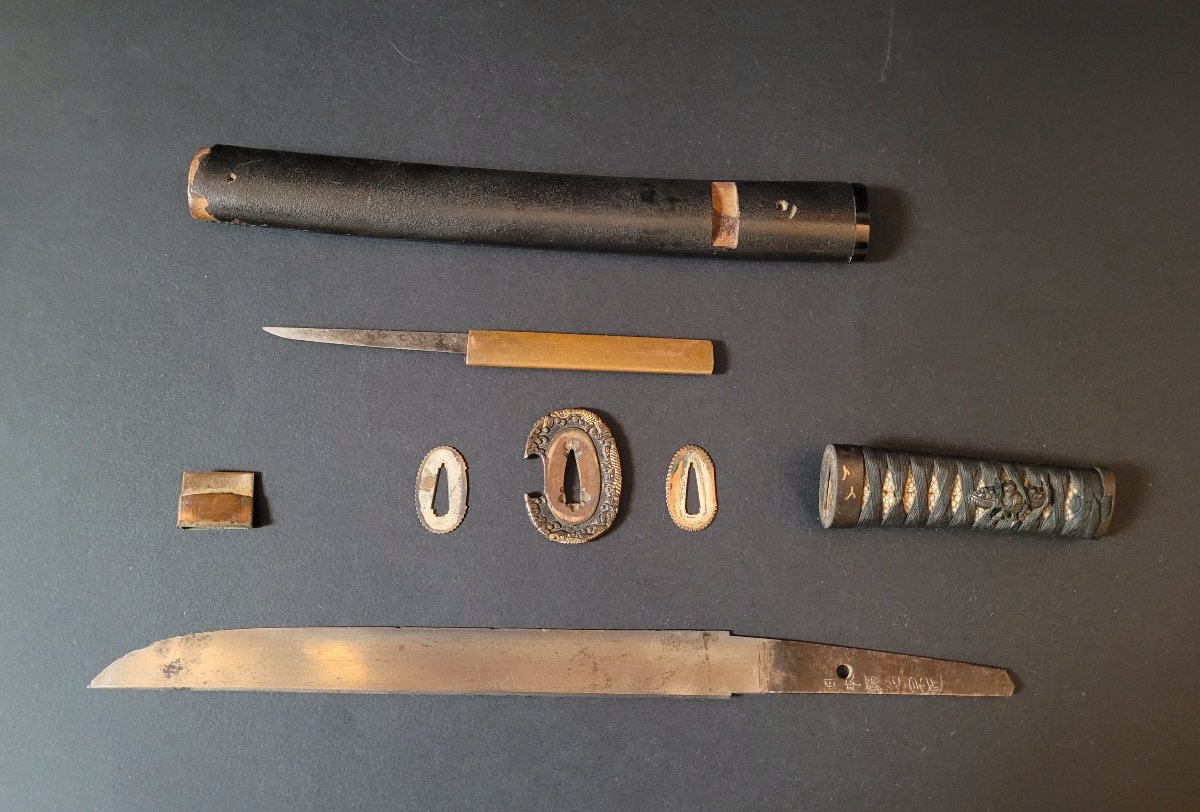

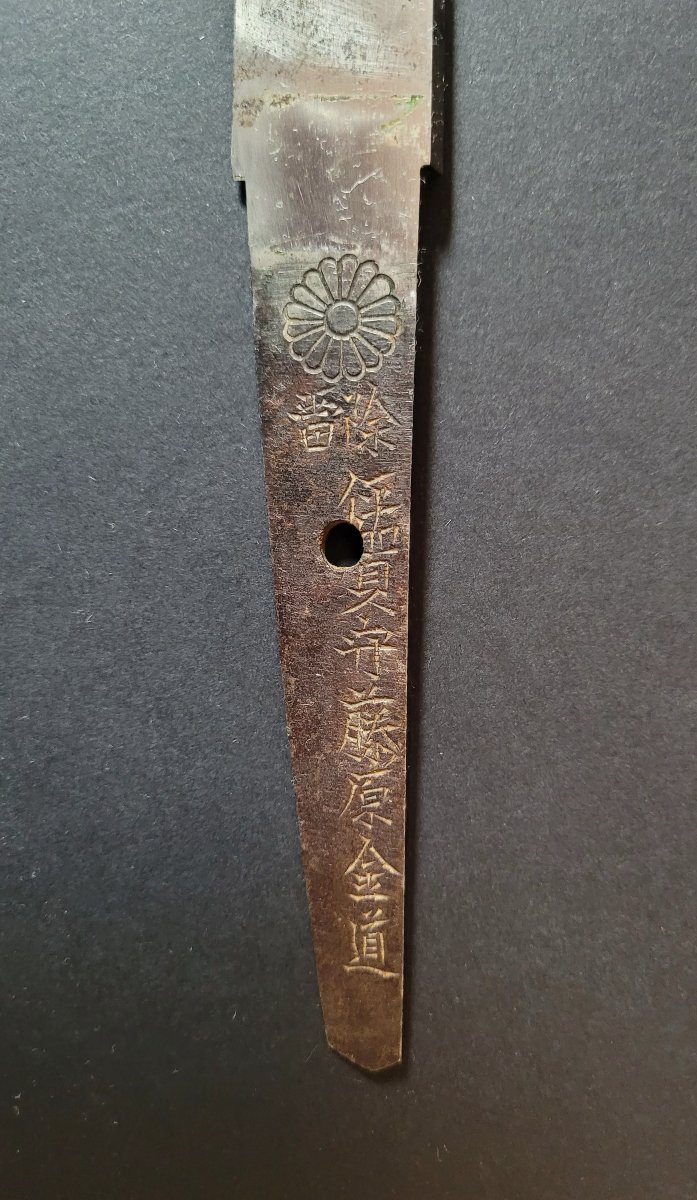
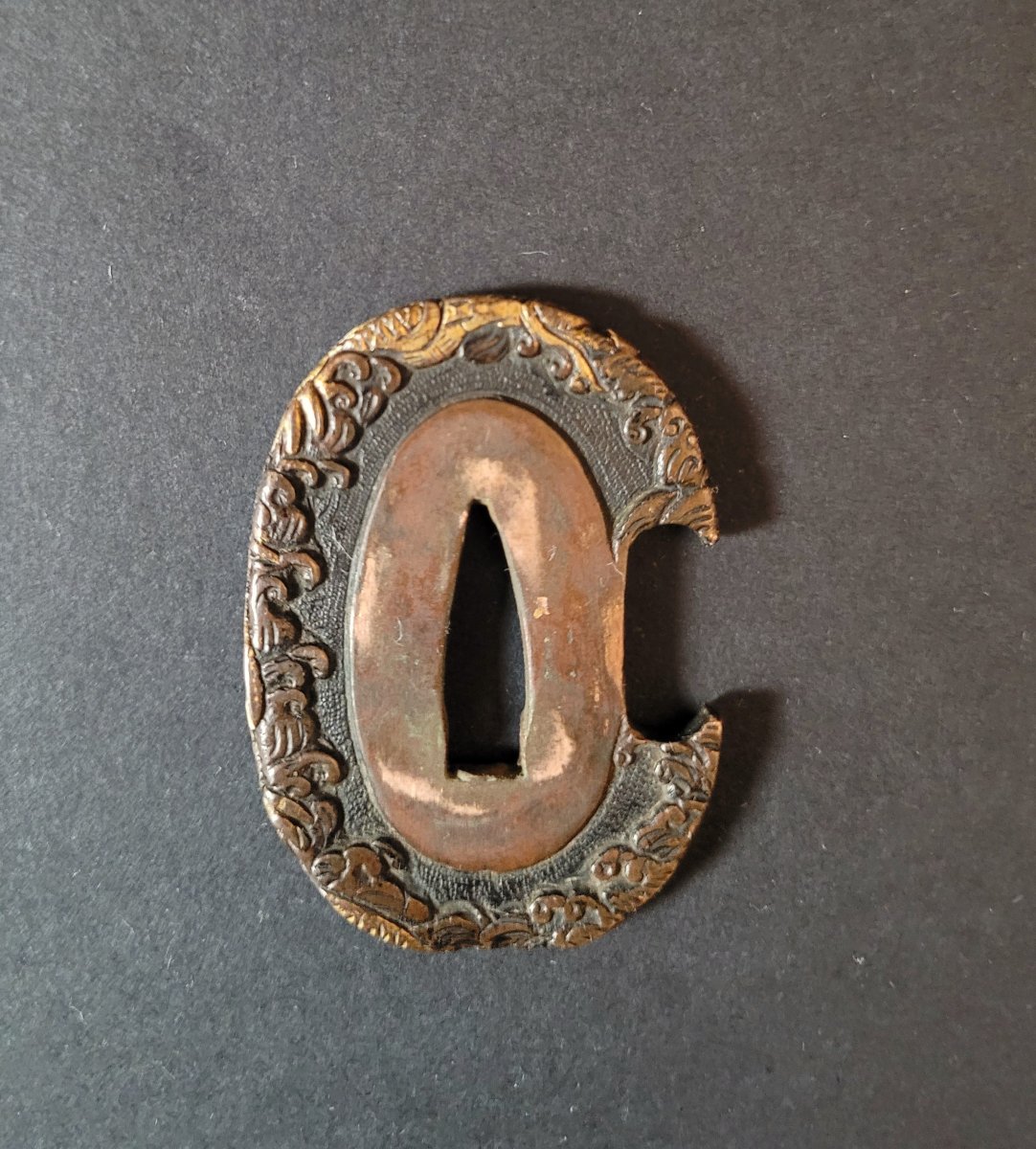
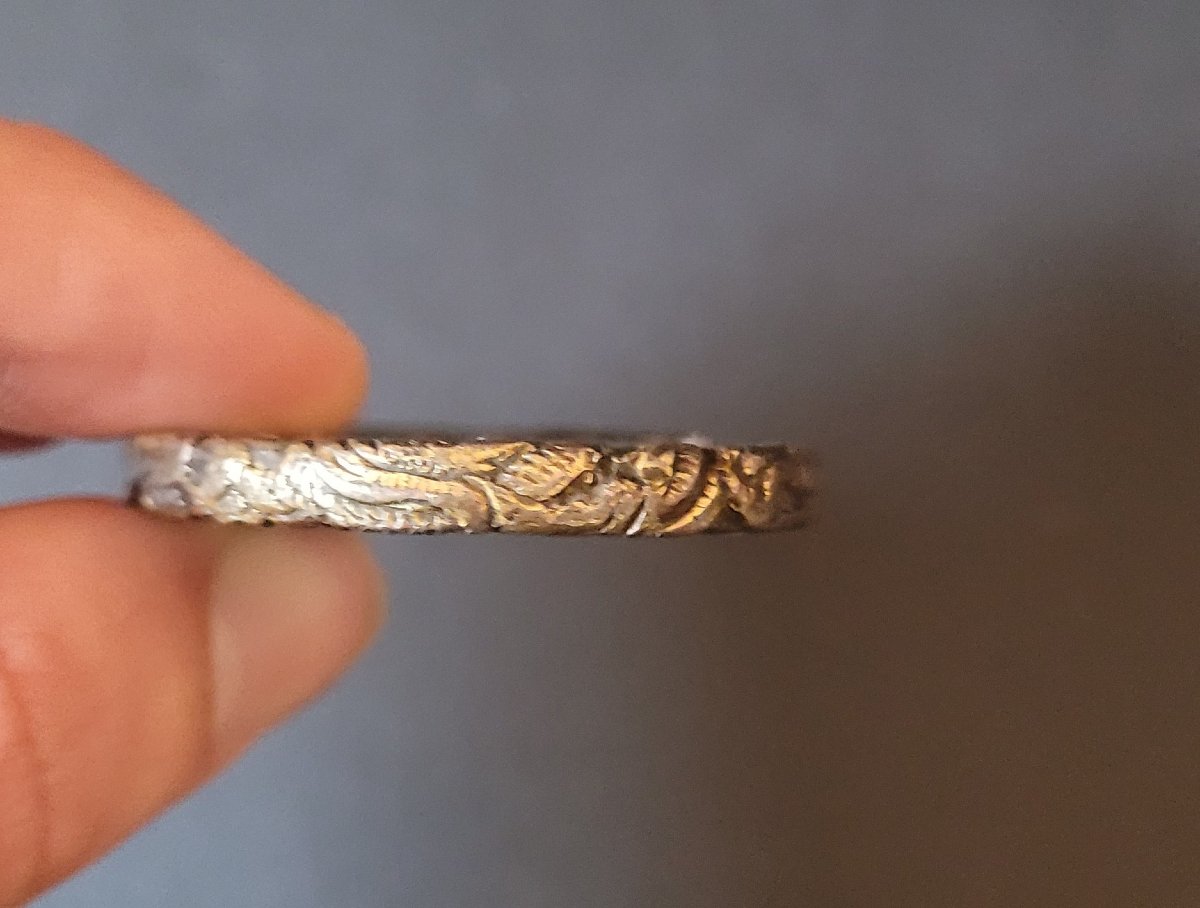
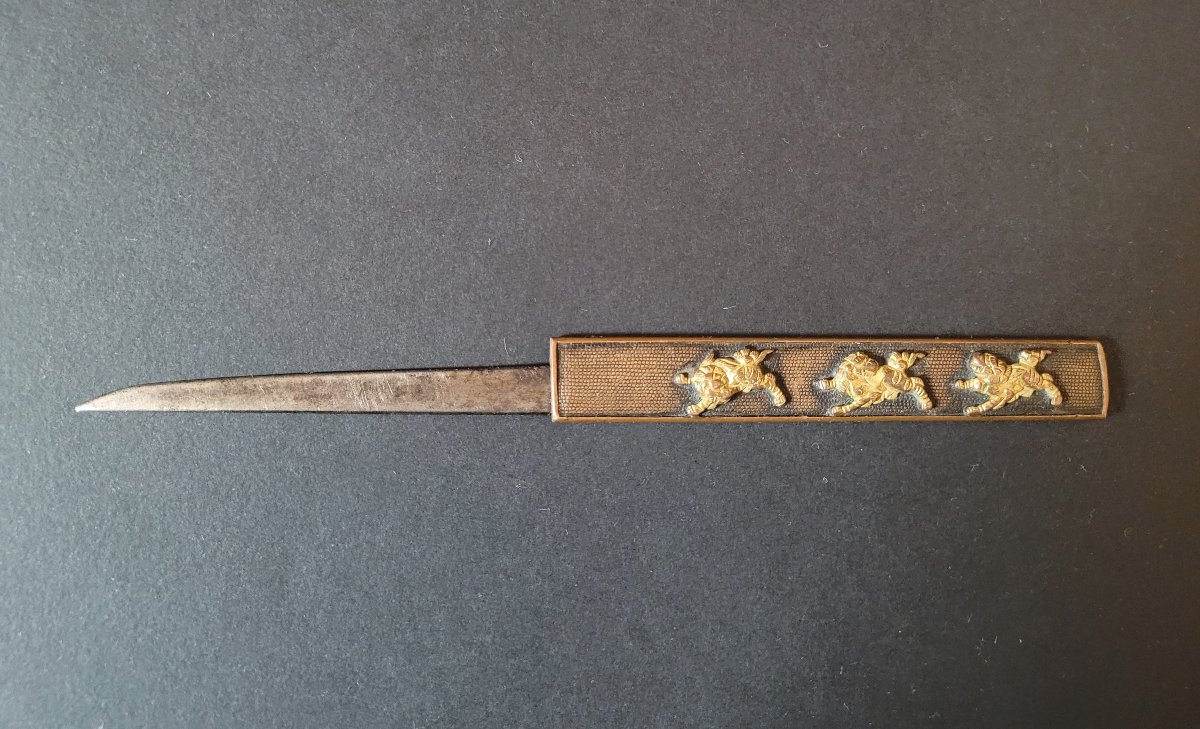
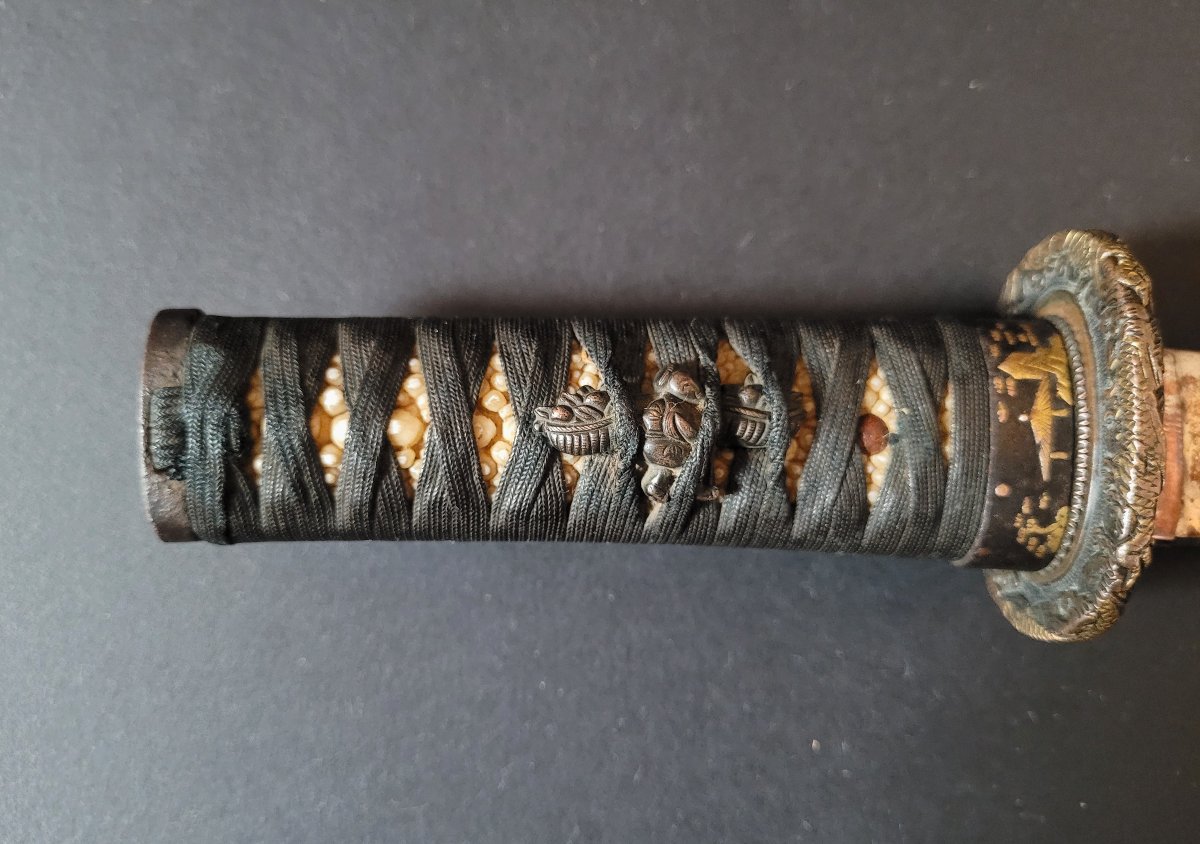

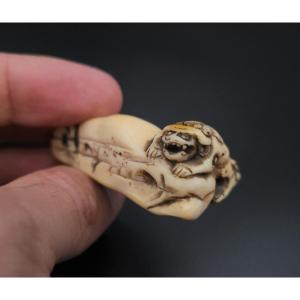
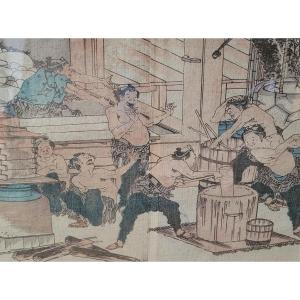

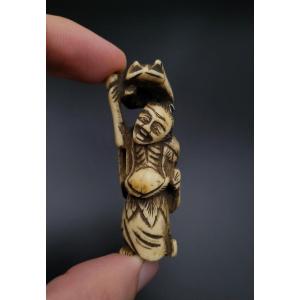





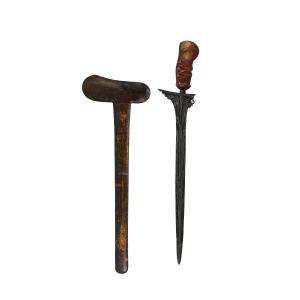
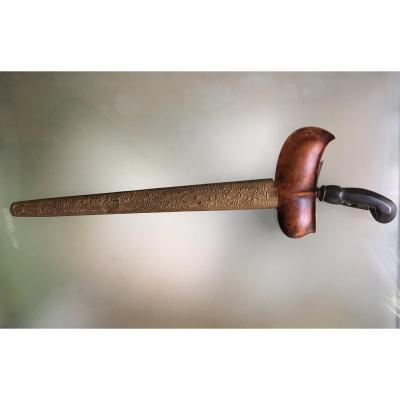



 Le Magazine de PROANTIC
Le Magazine de PROANTIC TRÉSORS Magazine
TRÉSORS Magazine Rivista Artiquariato
Rivista Artiquariato
